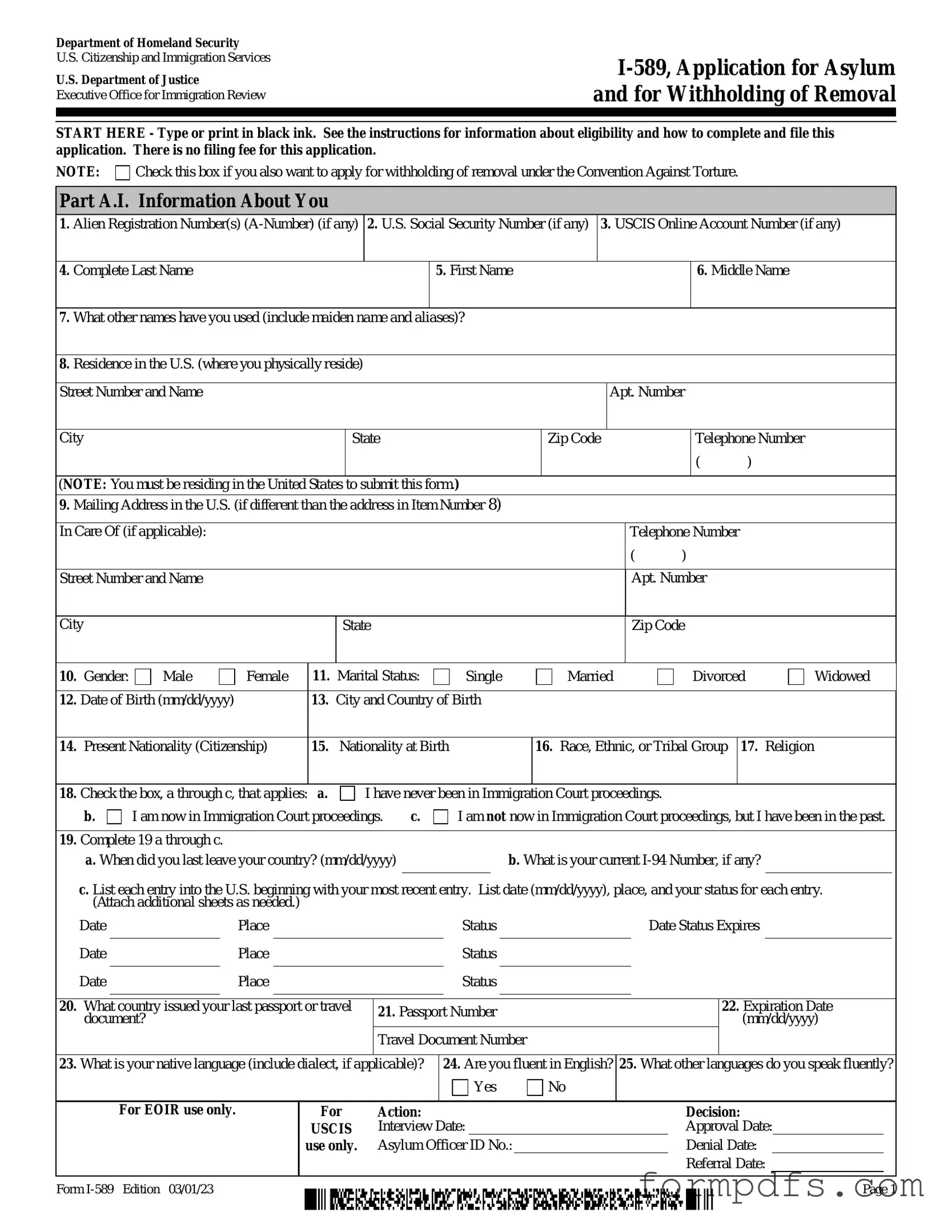What is the USCIS I-589 form used for?
The USCIS I-589 form is used to apply for asylum in the United States. Individuals who fear persecution in their home country due to factors such as race, religion, nationality, political opinion, or membership in a particular social group can use this form to request protection. By submitting the I-589, applicants seek to demonstrate their eligibility for asylum and explain the circumstances that led them to flee their country.
Who is eligible to file the I-589 form?
Eligibility to file the I-589 form generally includes individuals who are physically present in the United States and who have a well-founded fear of persecution in their home country. This applies to both individuals and their immediate family members. However, there are specific deadlines; typically, applicants must file within one year of their arrival in the U.S., unless they can show changed circumstances or extraordinary circumstances that justify a late application.
What documents should be submitted with the I-589 form?
When filing the I-589, it is essential to include supporting documents that can strengthen your case. These may include personal statements detailing your experiences, evidence of the conditions in your home country, and any relevant identification documents. Additionally, if you have family members applying with you, documentation proving your relationship to them should also be included. Always keep copies of everything you submit for your records.
How long does it take to process the I-589 form?
The processing time for the I-589 form can vary significantly based on various factors, including the complexity of your case and the workload of the USCIS office handling your application. Generally, applicants can expect to wait several months to over a year for a decision. It's important to stay informed about your case status and respond promptly to any requests from USCIS for additional information.
What happens after I submit the I-589 form?
After submitting the I-589 form, you will receive a receipt notice from USCIS confirming that your application has been filed. Following this, you may be scheduled for an interview with an asylum officer or a hearing before an immigration judge, depending on your case's specifics. During this process, you will have the opportunity to present your case and provide any additional evidence. It’s crucial to prepare thoroughly for these proceedings, as they play a significant role in the outcome of your asylum request.
